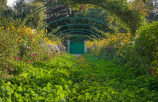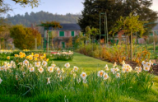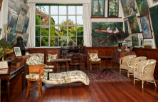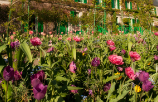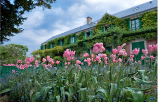May 1883. Claude Monet moves into the ‘Pressoir’…
That was 136 years ago. Claude Monet moved to Giverny with his two children Michel and Jean, and Alice Hoschedé and her six children Blanche, Suzanne, Germaine, Jean-Pierre, Marthe and Jacques…
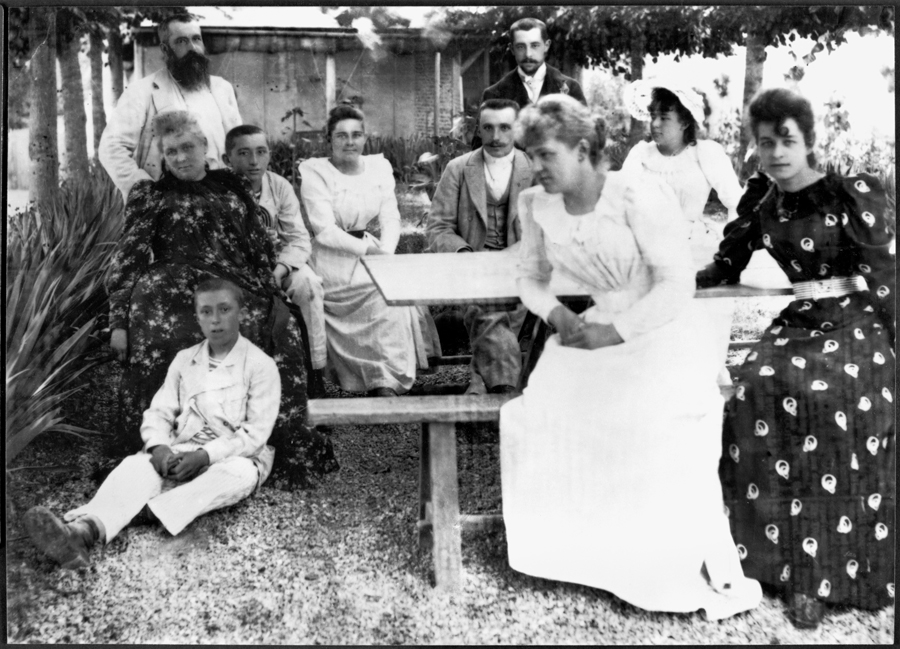
De gauche à droite : Michel (assis), Alice Hoschedé, Claude Monet, Jean-Pierre, Blanche, Jean, Jacques (debout), Marthe (au premier plan), Germaine et Suzanne. (1886). Copyright : musée Marmottan Monet ©Bridgeman Image.
This regular traveller between Paris and Normandy had already known Vernon for countless years. But how on earth did Claude Monet find Giverny, a village tucked away from the train line and which, in 1883, only had 279 inhabitants? According to his stepson, Jean-Pierre Hoschedé, an exploration journey in a little train connecting Vernon to Gisors combined with a journey on foot helped him unearth this little gem. Forced to leave his house in Poissy, Claude Monet headed to the countryside to find a home capable of fulfilling his dreams of stability. The artist fell for the charm of the blossoming orchards and yellow irises lining the wet grasslands of the Epte, and the curves of a hill covered with vines and crops…
April 1883. While wandering around Giverny, the impressionist artist spotted an abandoned farm at a place known as ‘Pressoir’, where cider used to be produced. According to Daniel Wildenstein, “Monet was won over by the blossoming fruit trees in the garden of the house he was to occupy”! After staying at the village’s only inn for several days, Claude Monet convinced the wealthy winegrower Louis-Joseph Singeot to lease him the building. The lease was signed on 3 May 1883. The blended family hurriedly packed their bags!
The Pressoir’s appearance was in stark contrast to the surrounding houses. It had pink render and grey shutters. The former owner chose this unusual colour combination as a subtle nod to his native Guadeloupe! And as for the slate roof, it featured a central pediment with a bull’s-eye window in a “very 18th century” style. The plot was fully enclosed with walls and included a courtyard, garden and ‘shacks’ spread across 9,600 square metres of land. The main house had four rooms on the ground floor and as many on the upper level. A beaten earth barn continued the building’s western wing. This is where Claude Monet set up his first studio, after laying a floor and installing a staircase. Given such a promising future, the impressionist artist declared he was “delighted with the area!”
In terms of the garden, there was a lot of work to be done. Clos Normand had an apple orchard, vegetable garden and several flower beds but severely lacked inspiration. Claude Monet loathed the box hedges and dreamed of redesigning the central path whose light was stolen by spruce and cyprus trees. The limestone on clay ground provided poor soil and drained poorly. Only the linden trees leading to a gate and the two yews at the entrance to the central path pleased his exacting eye. But, astounded by the changing effects of the light and surrounding vegetation, the master impressionist immediately discerned the site’s potential…
After years of uncertainty, the Monet-Hoschedé clan had finally found a house to call home until the end of their days. By a strange twist of fate, the artist was 43 years old when he moved into Giverny. And he would spend 43 years there, during which time he would finally overcome his financial difficulties and reach the peak of his art. Giverny was starting to work its magic…
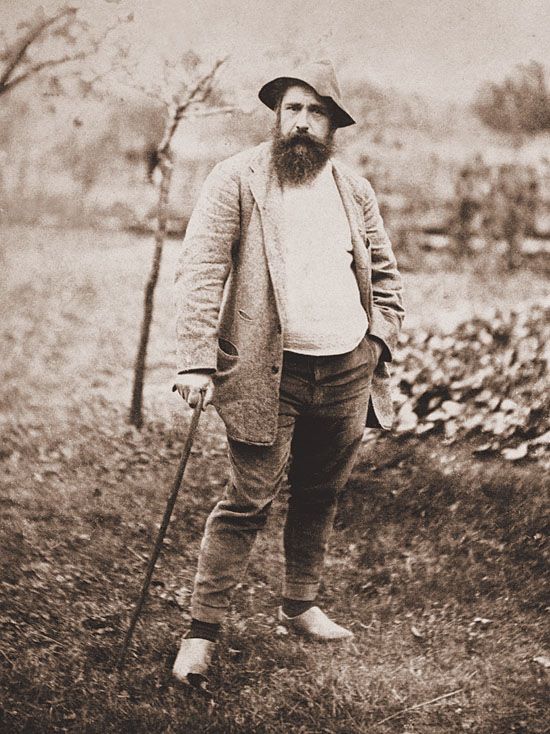
Claude Monet, 1889, BNF




